Stepping through the grand entrance of the Palace of Versailles, one can’t help but be captivated by the sheer opulence and grandeur that defined the reign of the Sun King, Louis XIV. Each day, the carefully orchestrated routines and rituals of the French monarch unfolded within these lavish interiors, showcasing the power and influence that radiated from the very heart of the French monarchy. From the meticulous rising ceremony to the intricate courtly etiquette, the day-to-day life of the king provided a glimpse into the lavish world that shaped the course of French history. What secrets and stories lie hidden behind the gilded facades and manicured gardens of Versailles?
Key Points
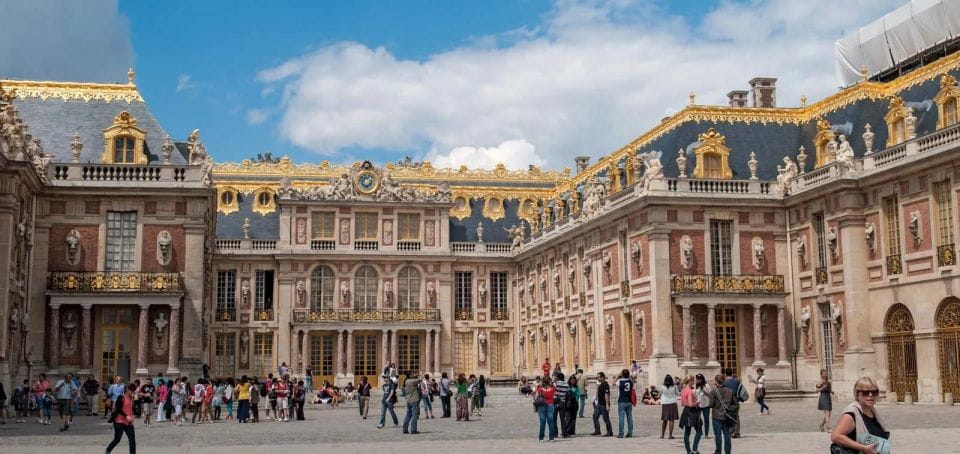
- The king’s morning ritual, known as the ‘lever’, was a highly choreographed event with strict etiquette and protocols observed by courtiers.
- Courtiers followed a meticulously organized daily routine at Versailles, adhering to rigid rules governing dress, speech, and movement.
- The opulent interiors of the palace, such as the Hall of Mirrors and the King’s Bedroom, exemplified the grandeur and extravagance of Louis XIV’s reign.
- Versailles was a center of culinary and artistic achievements, with the hotel of the Royal Academy and the rise of French haute cuisine.
- The palace and its gardens were architectural marvels, showcasing the wealth and power of the French monarchy under the Sun King.
The Architectural Grandeur of Versailles
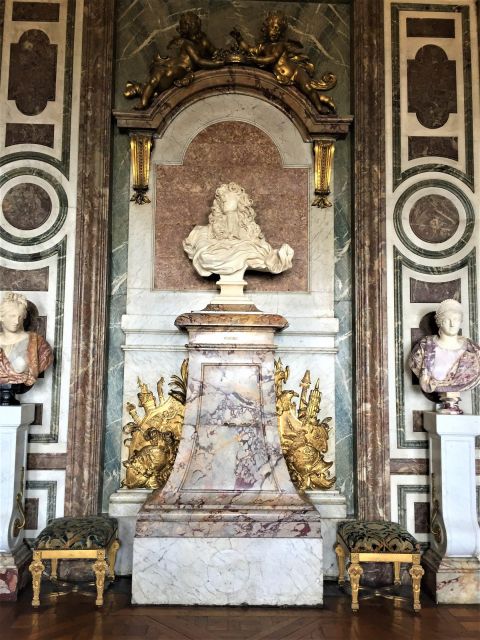
The Palace of Versailles stands as an architectural marvel, a testament to the ambition and vision of King Louis XIV.
Its grandiose design, marked by opulent interiors and meticulously manicured gardens, continues to captivate visitors from around the world.
From the imposing Hall of Mirrors with its crystal chandeliers and gilded fixtures to the ornate King’s Bedroom, every inch of the palace exemplifies the extravagance of the Sun King’s reign.
The expansive gardens, with their ornamental fountains and meticulously pruned hedges, offer a serene respite from the opulence within.
Versailles’ architectural splendor has inspired countless European palaces, cementing its status as a true icon of French Baroque design.
Here are more great tours and experiences we've reviewed in Paris
Louis XIV’s Lasting Impact on France
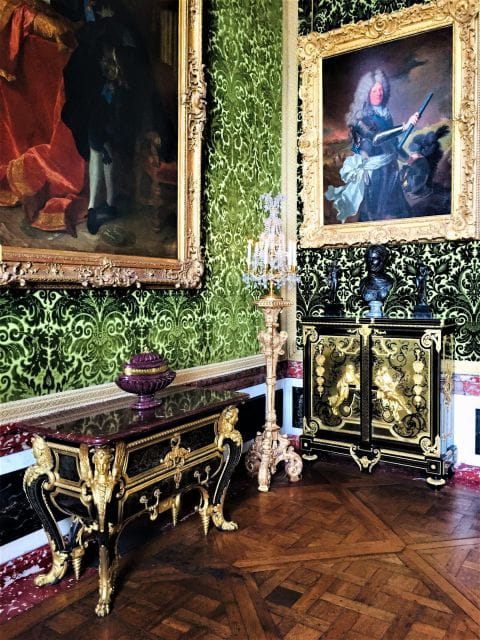
Beyond the architectural splendor of Versailles, King Louis XIV’s transformative reign left an indelible mark on France, propelling the country into an era of unparalleled cultural and political prominence. Dubbed the "Sun King," Louis XIV’s legacy extended far beyond the grandiose palace, as he fostered a golden age of French excellence. Under his leadership, France witnessed the birth of groundbreaking achievements in the arts, sciences, and governance.
| Key Contributions | Impact |
|---|---|
| Established the Royal Academy of Dance, Painting, and Sculpture | Elevated French arts and culture to new heights |
| Oversaw the construction of Invalides Building and Place Vendôme | Transformed the architectural landscape of Paris |
| Promoted the refinement of French cuisine and perfumery | Cemented France’s reputation for elegance and sophistication |
Louis XIV’s vision and ambition transformed France into a global powerhouse, a testament to the lasting influence of the Sun King.
Exploring the Gallery of Mirrors
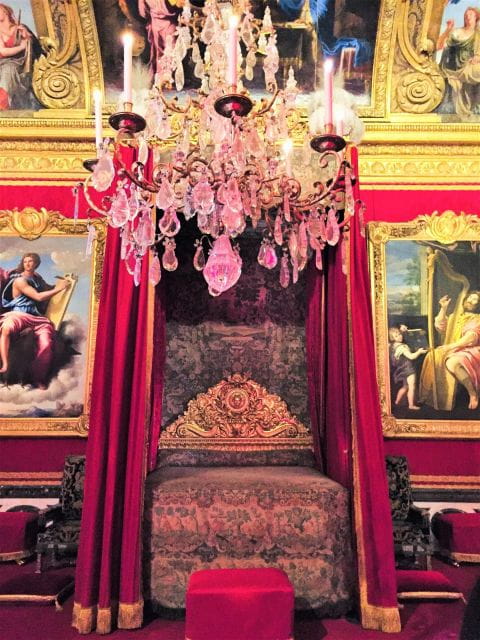
Arguably the most iconic and breathtaking feature of the Palace of Versailles, the Gallery of Mirrors captivates visitors with its sheer grandeur and opulence.
Stretching nearly the entire length of the west wing, this magnificent hall boasts seventeen mirrored arches that reflect the lush gardens and fountains outside, creating an illusion of infinite space.
Louis XIV spared no expense in adorning this space, which was meant to dazzle and impress. Crystal chandeliers hang overhead, casting a warm glow, while the gilded ceiling panels and sculpted alcoves exude an air of unparalleled luxury.
As courtiers strolled through this magnificent corridor, they couldn’t help but be awestruck by the splendor that surrounded them.
Courtly Life and Etiquette at Versailles
Life at the court of Versailles revolved around a meticulously choreographed system of etiquette, where courtiers jockeyed for the king’s favor through their adherence to strict protocols.
Courtiers had to master the art of graceful conduct, from the proper way to greet the monarch to the nuances of dining at the royal table. Failure to follow the intricate rules could lead to social ostracization or even banishment from the court.
Powdered wigs, scented gloves, and ornate fashions were de rigueur, as courtiers strived to present an image of refined elegance.
Even the king’s morning ritual, the lever, was a highly regulated affair, with nobility vying to assist in dressing the Sun King. Versailles was a world unto itself, where etiquette reigned supreme.
The Majesty of the King’s Bedroom
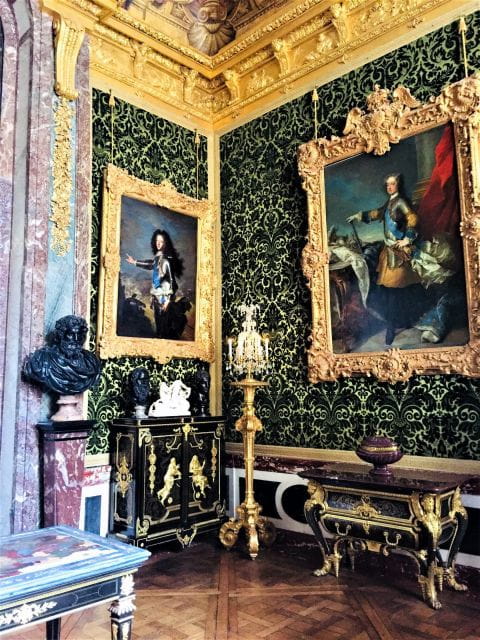
At the heart of the meticulously curated world of Versailles lay the King’s Bedroom, a sanctum of unparalleled opulence and grandeur that embodied the majesty of Louis XIV.
Bathed in the warm glow of gilded sconces, the vast chamber exuded an air of absolute power and prestige. The centerpiece was the imposing royal bed, a masterpiece of woodcarving and embroidered silks.
Nearby, a sumptuous dressing room allowed the king to prepare for the day’s rituals in absolute privacy. Every detail, from the delicate tapestries to the ornate furniture, spoke of the Sun King’s wealth and influence.
It was here that Louis XIV would begin each day, asserting his dominance over both his court and his kingdom.
- Paris City Sightseeing Half Day Segway Guided Tour
- Paris Local Districts and Stories Off the Beaten Track Guided Bike Tour
- Skip-The-Line: Paris Catacombs Tour With VIP Access to Restricted Areas
- Paris Sightseeing Guided Bike Tour Like a Parisian With a Local Guide
- Giverny Small-Group Half Day Trip With Monet’S Gardens From Paris
- Paris Gourmet Dinner Seine River Cruise With Singer and DJ Set
Culinary and Artistic Achievements
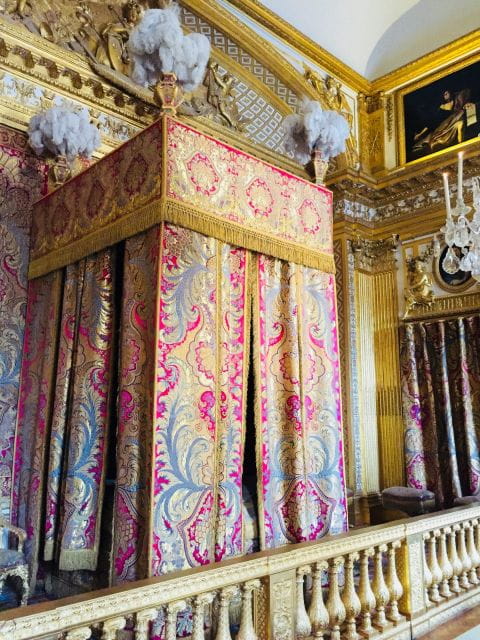
Louis XIV’s patronage fostered an unparalleled flowering of French culinary and artistic achievement, cementing the nation’s reputation as a global cultural powerhouse.
The king established the Royal Academy of Dance, Painting, and Sculpture, which nurtured a new generation of masters. He also supported the rise of French haute cuisine, with chefs like François Vatel elevating cooking to new heights.
Under the Sun King’s watchful eye, Versailles became a hub of artistic innovation, from the grand landscaping of André Le Nôtre to the opulent interiors designed by Charles Le Brun.
From the grand festivities to the refined etiquette, Louis XIV’s court exemplified the height of French sophistication and splendor.
Routine and Practices of Courtiers
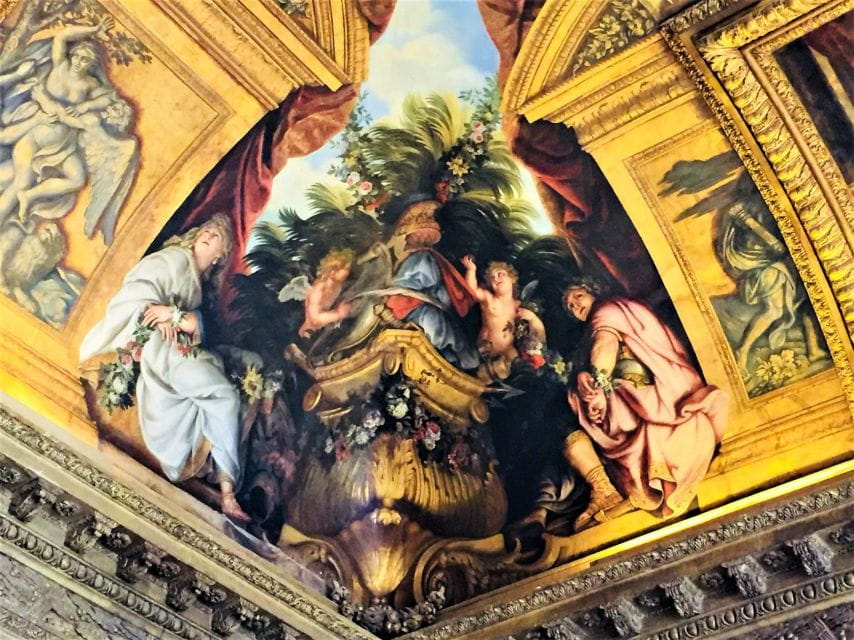
Courtiers at the Palace of Versailles adhered to a meticulously organized daily routine, their every action dictated by rigid etiquette and protocol to maintain the grandeur of the Sun King’s court.
Each morning, they gathered to observe the king’s elaborate rising ceremony, the ‘lever,’ where they’d vye for the privilege of assisting in Louis XIV’s dressing.
Throughout the day, courtiers observed strict rules governing their dress, speech, and movement, ensuring they projected an image of refinement and deference.
Even the most mundane tasks, like grooming and refreshing one’s breath, were carried out with utmost precision.
This intricate web of courtly customs reinforced the monarch’s absolute power and the exclusivity of his inner circle.
Highlights of the Versailles Tour
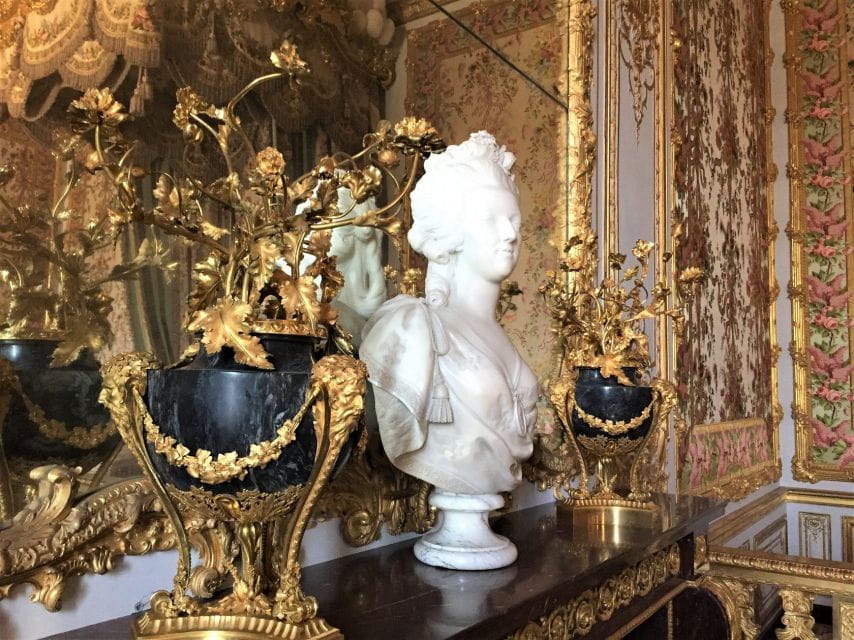
The Versailles tour provides visitors with a multifaceted experience, offering an in-depth understanding of the palace’s remarkable architecture and the captivating personality of its most famous resident, King Louis XIV. From the opulent interiors, such as the stunning Gallery of Mirrors, to the impeccably manicured gardens, the tour immerses guests in the grandeur and elegance of the French monarchy. Participants will learn about Louis XIV’s numerous achievements, including his patronage of the arts and his ambitious building projects. The tour also sheds light on the intricate etiquette and rituals that governed court life, leaving visitors with a deeper appreciation for the complexities of Versailles and the legacy of the Sun King.
| Tour Highlights | Description |
|---|---|
| Architectural Wonders | Explore the palace’s ornate interiors and renowned gardens |
| Personality of Louis XIV | Discover the king’s remarkable accomplishments and influential character |
| Court Life & Etiquette | Understand the intricate rules and practices that defined daily life at Versailles |
Frequently Asked Questions
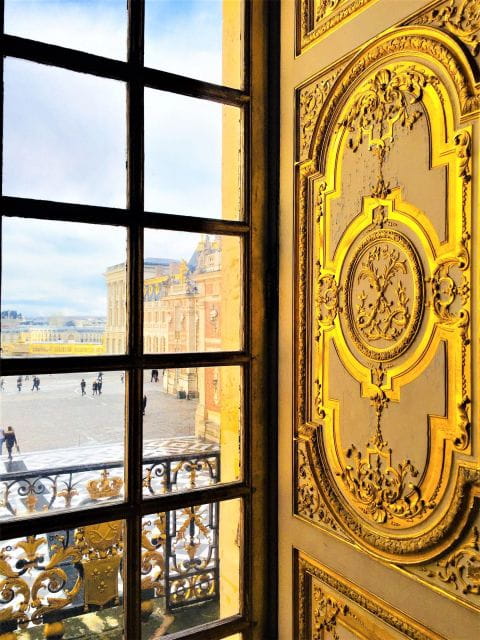
How Was Versailles Financed During Its Construction?
Versailles was financed primarily through the immense wealth and resources of Louis XIV’s kingdom. The king diverted substantial funds from the royal treasury to cover the exorbitant construction costs, transforming a modest hunting lodge into an opulent palace.
What Was the Role of the Queen in Court Life?
The queen played a crucial role in court life, serving as the king’s companion and wielding significant influence. She participated in ceremonies, oversaw the royal household, and hosted prestigious social events that reflected the monarchy’s power and prestige.
How Did Louis XIV Manage His Personal Relationships?
Louis XIV meticulously managed his personal relationships, deftly balancing the demands of his wife, mistresses, and family. He adeptly navigated the intricacies of court life, ensuring his authority remained unquestioned while catering to the needs of those closest to him.
What Were the Living Conditions for Common People Near Versailles?
Common people living near Versailles often faced challenging conditions. They struggled with poverty, overcrowding, and limited access to resources compared to the lavish lifestyle of Louis XIV and the court. Life for the peasantry was arduous and lacked the grandeur of the palace.
How Did the Design of Versailles Influence Other European Palaces?
The grand architecture and lavish design of Versailles set a new standard for European palaces. Many rulers across the continent emulated its opulent aesthetic, incorporating its defining features like extensive gardens and gilded interiors into their own royal residences.
Recap
The grandeur and splendor of Versailles under Louis XIV’s reign are truly captivating. From the lavish interiors to the meticulously maintained gardens, the palace exemplifies the Sun King’s vision for France.
Courtiers navigated the intricate web of etiquette, while the king presided over state affairs and lavish feasts.
Versailles stands as a testament to the power, influence, and enduring legacy of one of France’s most renowned monarchs.
More 1-Day Tours in Paris
- Paris: Private Day Trip to Champagne with 8 Tastings & Lunch
- Versailles Palace : Day Trip & Paris Hop-On Hop-Off
- Paris: Normandy D-Day Sights Day Trip with Hotel Transfers
- Paris: Private Chauffeur-Driven Champagne Region Day Trip
- Paris: Day Trip to Loire Castles
- Paris – Bercy Village – Access to 1 day of unlimited climbing
More Tour Reviews in Paris
Not for you? Here's more things to do in Paris we have recnetly reviewed
- Paris: Mini Golf and Climbing Combo Ticket
- Paris Vintage Side-Car Tour + River Cruise
- Paris: Photoshoot Around Eiffel Tower with 55 Edited Photos
- Paris: Seine River Cruise and 3-course Bistro Lunch
- Paris : Montmartre highlights walking tour
- Paris: Loire Valley Castles Day Trip with Entry Tickets
- Paris: French Wine Experience in Parisian Cellar
- Paris: Seine River Dinner Cruise with Live Music
- Paris: The vibrant city center and Le Marais
- Paris : Christmas Special Lunch Cruise on the Seine River
- Vintage Shopping Tour Paris
- Private Photoshoot Louvre Museum Exterior
